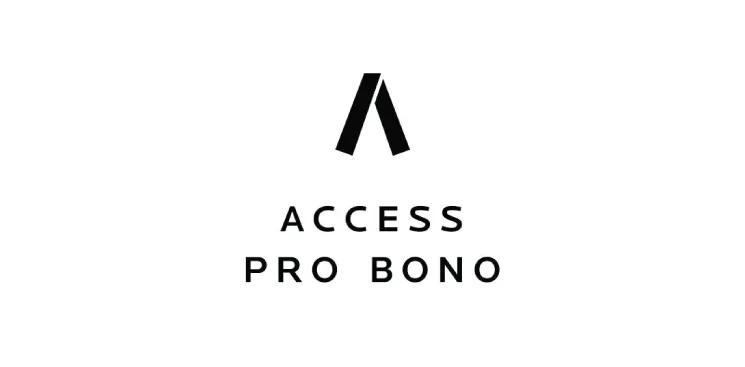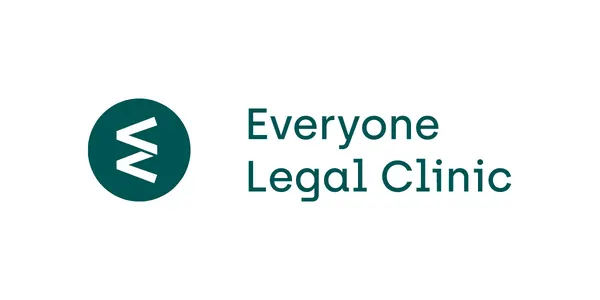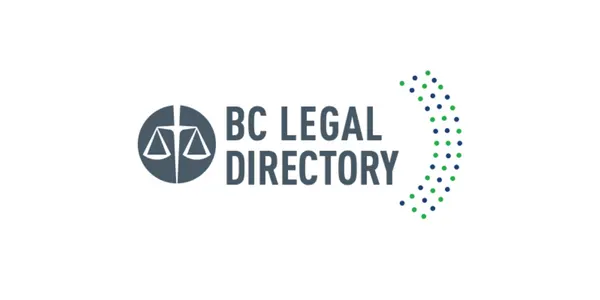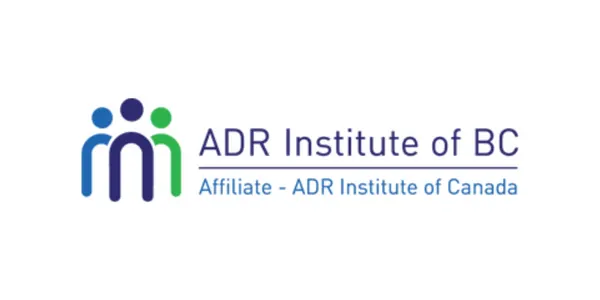
My dog Rex was aggressive in the past. He even (cue the cliché!) bit the mail carrier, among others. But we've sent Rex to an intensive dog academy and had him checked to make sure there's no underlying medical issues. He's very mild tempered and well behaved now. So I don't have to worry nearly as much.
Too loose a leash. Too short a fence. Dog attacks happen, and the consequences for both the owner and the victim can be severe. There are several rules and laws in BC to know about who can be held liable for dog attacks. Let’s get into it.
What you should know
“I had a dog when I was studying in Montreal. That dog had a lot of energy. One day they ran out the door very fast, knocking a passerby off their feet. We exchanged information. I even got a letter from her lawyer, but we settled it amicably. When I moved back home to Castlegar, I figured I had a good legal handle on dog attacks, but a lawyer friend told me that BC has “special” rules when it comes to these sorts of things."
– Addison, Trail, BC

There’s a big difference if you’re attacked by a dog in British Columbia than in, say, Quebec, even if the circumstances are otherwise very similar. Many provinces have their own animal laws, and the common law (principles that have evolved over the years through successive court cases) has taken different paths in each part of Canada.
When it comes to aggressive or dangerous dogs, BC has the Community Charter (and, in the case of Vancouver, the Vancouver Charter). This law provides guidance on things like:
what defines a dangerous or aggressive dog
powers that animal control officers have in dealing with dangerous dogs
muzzling and enclosure requirements for dangerous dogs
There are also local bylaws specific to individual municipalities.
So, be careful when researching the law on this issue. It can be tempting to look for cases or rules that fit nicely with your situation, but they may only apply to a specific province. Our information focuses on BC.
Find bylaws relating to dogs in your community
On the website CivicInfo BC, you can search across local government websites to find local bylaws relating to dogs in your community. In the search box, try typing in “dog bylaw [community name]”.
Owners, guardians, and caretakers are responsible for the actions of their pets — at all times. You could be walking your friend’s dog for five minutes just this once; if they attack someone, you could be on the hook, for anything from injury-related medical costs to property damage.
The broad rule of negligence goes like this: if harm to others from an animal’s behaviour is foreseeable, the person in charge of the dog has a responsibility to prevent the harm. Here are a few examples:
You take your dog to an on-leash park, but (foolishly!) let the dog off leash, and the dog bites the leg of another park visitor. You might be liable to compensate that other visitor because going off-leash was against the law. It was also unreasonable.
Your pet likes to dig under and shimmy through a hole in your fence or can unlock unsecured gates. On the other side of the fence there’s a daycare. If you don’t fix that fence or gate, and the pet bites one of those kids, you could be considered negligent.
A friend’s dog bites a party guest at your house. That isn’t your dog, but you’re responsible for their behaviour while they’re on your premises. Exercise proper precautions.
Negligence cases aren’t straightforward. They rely heavily on the context. Use your better judgment and think of others. Your duty as dog owner (or, as the person taking care of the dog) is to take reasonable precautions to prevent foreseeable injuries. Things like:
Leashes. Use them whenever you’re outside your property or a designated off-leash area. Make sure your leash is appropriate for your breed (and make sure you can handle your breed!). Follow your local bylaws about appropriate types and lengths of leash.
Muzzles. A must for dogs whose breed is labelled dangerous, a local bylaw insists on it, or you have been warned by an animal control officer.
Enclosures. Some dogs need more room to roam. And some can get too excited when visitors come over. Make sure the pet’s “home within your home” is appropriate and escape-proof.
In some negligence cases, the person who was attacked can be partially at fault. For example:
The owner put a “beware of dog” sign on their front lawn, but the victim walked onto the front lawn to pet the dog anyway.
A parent brings their child to a friend’s house. That friend has an aggressive dog the parent knows about. In fact, that dog bit another person just last week (which the parent also knew about). The kid is left to play with the dog, and gets bitten.
A man is causing a ruckus on his front porch, yelling loudly at a garbage collector. A leashed dog, hearing the yelling, gets frightened, leaps from their owner’s grasp and attacks that man.
How much blame is yours? That can depend. A judge may portion out the blame in different chunks (like 50/50, or 75/25), depending on how people acted and what judges ruled in similar cases in the past.
“I’d always had rescue dogs growing up, and felt ready to take one on now that I’m a bit more settled after university. I locked eyes with a Weimaraner last week at the SPCA — it was love at first sight! The person working there warned me though, saying this pup had a troubled past and can get aggressive. But she’s so gentle with me. I don’t plan to take any special measures to keep her or others safe, but should I?"
– Jackson, Maple Ridge, BC

Yes. You should be well informed before bringing an animal home, both for the sake of the animal, for your sake, and for the public. Aside from negligence, there’s an old legal term called scienter, which means “knowledge of poor behaviour.”
So you must be asking, what’s a history of bad behaviour? This is where the law gets murky. If your pet has bitten someone in the past, that qualifies. But if your pet is just dangerous — as in, friendly, but big and clumsy — but not necessarily vicious, that could also be enough to show a history of bad behaviour.
Often known as the “one bite rule,” scienter goes like this: if you know your animal has a history of bad behaviour, and the injured party can prove it, you’ll be held liable for the consequences.
And, while general negligence cases with pets can come down to the precautions an owner took, with scienter, an owner can be held absolutely liable. This means no ifs, ands, or buts — no matter how high your fence is or strong your leash was, that won’t help your defence. So take extra precautions if your animal has any priors.
Sometimes the owner can escape liability wholly or in part if it’s shown that the victim provoked the dog. Again, as with negligence, there’s no hard-and-fast rule about what constitutes provocation. It might be:
A child throwing stones at a dog repeatedly for hours.
An injured dog reacting poorly to a person trying to help them.
Somebody sneaking up on a dog from behind and trying to pet them.
Unlike in negligence cases, if it’s determined that a victim provoked a dog, then the owner may not have any liability.
You may think that since Canada has a public healthcare system, a dog bite is nothing to worry about: it’ll just be taken care of for free. But that may not be the whole picture. Owners can be held liable for several things relating to animal attacks:
Property damage. If your dog destroys part of a fence, or swallows a diamond ring, you as the pet owner could be on the hook to pay for the cost of replacement.
Damages related to the victim’s physical injuries, like wage loss. You never know who your dog might bite! Let’s say your pooch attacks a concert pianist, and they can never play music again. As the pet owner, you may be asked to pay for lost wages for the rest of that musician’s career.
Injuries not covered by public healthcare. It’s not always just a few stitches. Some attacks can be severe. Certain surgeries are not fully covered by our medical system. And the victim may have ongoing costs if they need physical therapy, mobility aids, or other trauma-related services.
Municipal fines. Municipalities can levy fines on owners for complaints about nuisance or property damage of their pets.
Prison time. While rare, if an owner is charged by the government with assault or criminal negligence, they can face jail time.
In rare cases, a dog attack will result in the owner being charged with a criminal offence. This is different from the negligence described above, where a victim seeks compensation for injuries suffered in civil court.
For example, the charge could be criminal negligence, an offence under the Criminal Code, where someone shows “wanton or reckless disregard for the lives or safety of others.” Or, if the dog was purposefully sent to attack someone by the owner, the charge could be assault.
Here, the government would be pressing charges against a pet owner. Again, these situations are rare. The government’s goals would be to punish a particularly bad pet owner and to deter similar future bad behaviour by others.
Animal owners and custodians must make sure your pet is healthy and safe and free from distress (there are laws on this). If you’re cruel or neglectful to your dog, they can be taken away from you by animal control personnel — often as a result of complaints from neighbours or the public.
What about non-owners who hurt dogs? That negligence principle above would apply, only in reverse. If any harm you do to a dog was reasonably foreseeable, then you can be held responsible for any damages, which could include veterinary bills or amounts to compensate the owner for pain and suffering.
And keep in mind, you’re responsible for the acts of your kids. So, if your 8-year old slips a “treat” to a neighbourhood dog, and that “treat” is actually a peach pit that has to be surgically removed, you might end up on the hook to pay for that procedure.
There can be serious consequences for an animal that injures a human being.
The Vancouver Charter and the Community Charter (this second one applies to most BC municipalities outside of Vancouver) allow for animal control officers to seize a dangerous dog from their home and apply to the Provincial Court to have the animal destroyed. In such a situation, a dog owner would typically have to convince the court that the animal does not pose an unacceptable risk to the public.
Destruction of an animal, though, isn’t necessarily the default choice of animal control personnel. They have wide discretion, and can craft particular orders or treatment plans with a dog’s owner. They may order rehabilitation or further training. Among the factors in play are where you live, the severity of the attack, and whether animal control officers have had to intervene in the past.
Before 2019, the law in BC allowed for provincial courts to impose conditional orders, where a dog is released back to their owner on certain safety conditions. But a recent decision by the BC Court of Appeal concluded that conditional orders are not possible if the Provincial Court has already decided the dog poses an unacceptable risk to the public — the dog has to be ordered destroyed.
One could say, then, that this case (which didn’t make it to Canada’s Supreme Court for a further verdict) eliminates certain rehabilitation options for dangerous dogs in BC. So, if your dog is a dangerous breed, it’s very important to take the right precautions to keep others safe well before something bad happens.
Under the BC Livestock Act, a person can protect their livestock from a dog that’s running at large and attacking or viciously pursuing livestock.
Livestock includes cattle, goats, horses, sheep, swine, or game. And this law sets out specific districts and areas where livestock can roam at large. Check out the government guidance to learn more about where these districts are located.
Work out the problem
Easy enough to say: but it’s best to prevent problems before they happen.
It’s on the owner or guardian to know if they’re taking care of a dangerous breed. Find out about your pup’s past to see if they’ve been aggressive before. Educate yourself on your municipality’s local bylaws. And make sure your dog has the right gear: proper enclosure, leash, muzzle, etc., to keep the public protected.
After the dog attack, stay at the scene. The parties should exchange information. Take photographs of what happened. Jot down notes of the details — relying on your memory after the fact can be tricky.
Let the local municipality know what happened. Google them for contact information. In Vancouver, you can call 604-873-7000.
Use the notes you’ve prepared and provide contact information for the other parties. An animal control officer will review the file and follow up.
If you were responsible for the dog at the time, you should be prepared to pay a fine. There may be other consequences depending on how severe the attack was or if the dog has had similar complaints in the past.
As a victim, the financial fall-out from a dog attack can be complex. There are the obvious expenses of hospital visits or medication. But there can be other costs, like the inability to work (either short or long term), or mental trauma. A legal professional can tell you what costs may be recoverable, and who you should file a claim against.
If you’re the owner or person responsible for the pet, a lawyer can outline the risk you will have to compensate the victim, and how much.
Seeing a lawyer sounds like it would be expensive. But some initial consultations are free. Often (as the injured party) you can strike a deal with your lawyer to pay nothing up front — they’ll just take a percentage of whatever damages you’re awarded. And there are options for low-cost or even free advice.
Plus, lawyers aren’t the only option. Have you heard of mediation? It’s less formal than court, faster, and generally cheaper than hiring a lawyer.
Otherwise, you can attempt to resolve the issue without a lawyer. You can discuss it in person with the dog owner or person responsible, or send them a letter that outlines your concerns.
Who can help
First off, your vet can be very helpful in identifying if your animal has aggressive tendencies and advising you on how to address them.

BC SPCA
Non-profit that works to protect and enhance quality of life for animals in BC.

Access Pro Bono's Free Legal Advice
Volunteer lawyers provide 30 minutes of free legal advice to people with low or modest income.

Access Pro Bono’s Everyone Legal Clinic
Clinicians provide affordable fixed-fee services on a range of everyday legal problems.

Lawyer Referral Service
Helps you connect with a lawyer for a complimentary 15-minute consult to see if you want to hire them.

BC Legal Directory
Search for a lawyer by community or legal issue. From the Canadian Bar Association, BC Branch.

ADR Institute of BC
Maintains a roster of qualified mediators and arbitrators who help with dispute resolution.


